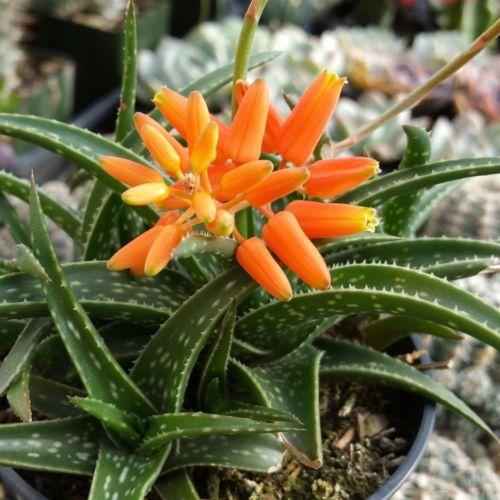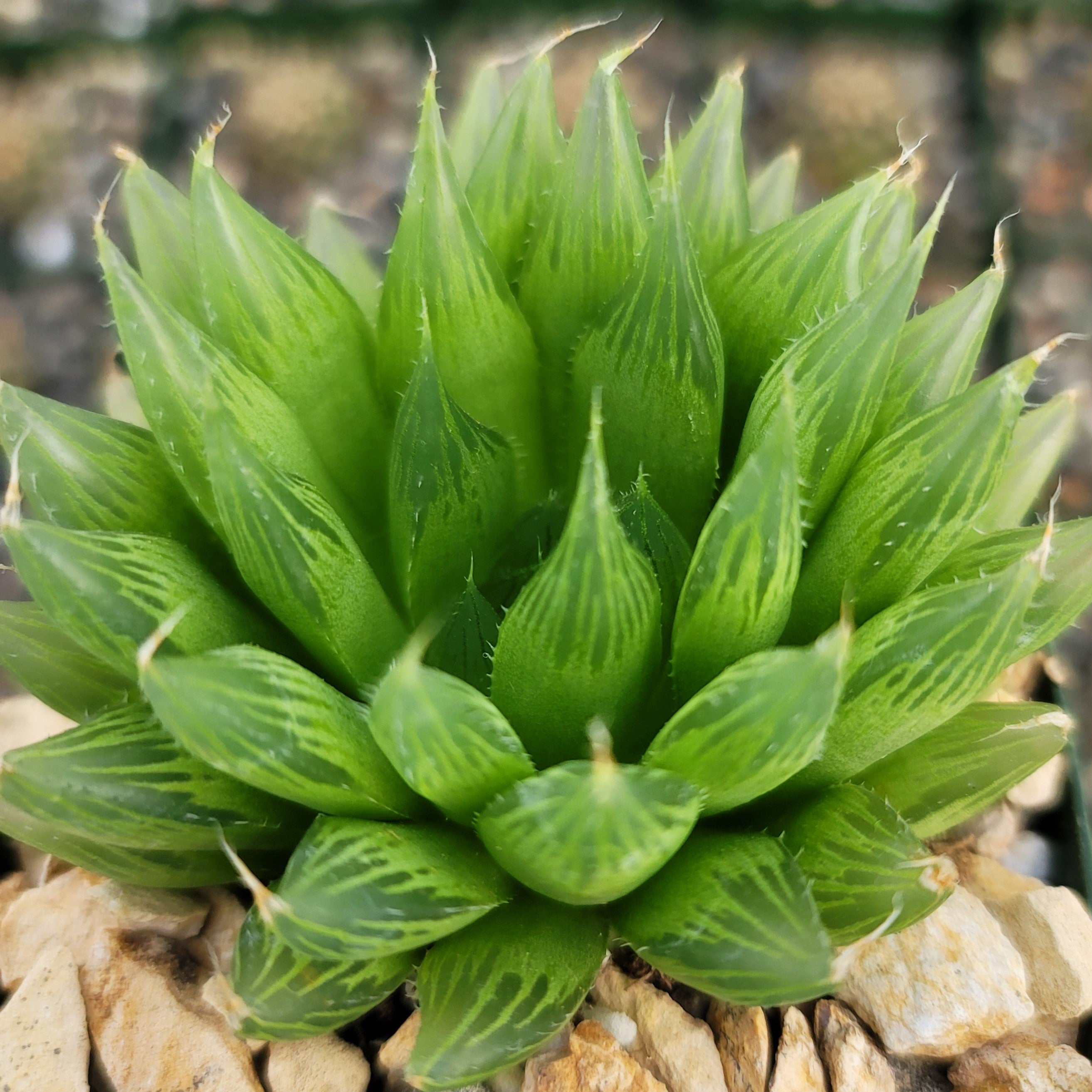Euphorbia Succulent Plants - Everything You Need To Know!
Updated: November 25, 2024

Euphorbia, commonly known as Spurge, is a vast and diverse genus with over 2,000 varieties. These Euphorbia plants come in an array of forms, from annuals and perennials to evergreen or deciduous shrubs and trees. Renowned for their drought tolerance and deer resistance, most Euphorbias are incredibly low-maintenance and thrive in both hot and dry climates.
Whether used in beds, borders, or rock gardens, their unique shapes and occasional vibrant flowers make them a standout choice, adding both durability and beauty to any landscape.
All About Euphorbia Plants: Beauty and Resilience

Euphorbia is a large and diversified genus of flowering plants in the Euphorbiaceae family. These are most common in southern and eastern Africa and Madagascar, but they can also be found in tropical Asia and the Americas.
Euphorbias exhibit an impressive variety of shapes, textures, and growth habits. Some, like the Euphorbia tirucalli (Pencil Cactus), can reach up to 30 feet in height, creating a striking, tree-like presence in landscapes. Others, such as Euphorbia obesa, remain small and round, perfect for potted displays.
Many Euphorbias are succulent-like in nature, storing water in their stems and leaves, making them highly drought-tolerant.
Their foliage can be evergreen or deciduous, and their forms range from upright stems to sprawling, ground-covering varieties.
When it comes to Euphorbia flowers, many Euphorbias offer eye-catching long-lasting blooms that can enhance the beauty of any garden or landscape. While not all species are known for their flowers, those that do bloom tend to produce bright, showy displays. Some varieties, such as Euphorbia milii (Crown of Thorns), are prized for their long-lasting, colorful bracts that resemble petals. These flowers, paired with the plant’s unique shapes and textures, make Euphorbias popular for garden design and decorative pots.
Our Top 10 Types of Euphorbia Plants are listed just below our Euphorbia plant care section.
Euphorbia Care 101: A Beginner's Guide
Euphorbias are easy to grow and beginner-friendly as well. They make for an excellent addition to homes as well as gardens as these succulent plants are drought-tolerant and can survive in extremely hot conditions. These features make them a popular choice for xeriscaping and water-wise gardening in regions where water conservation is essential.
As long as Euphorbia plants receive adequate sunlight, they thrive wonderfully in both indoor and outdoor settings. It is important to note that young plants need more attention. Once your plant matures, it can grow happily even in negligence.
Quick Reference

Bloom Season
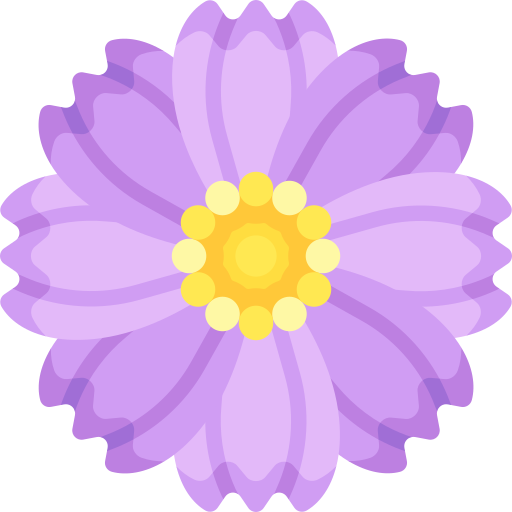
Flower Color

Growth Rate
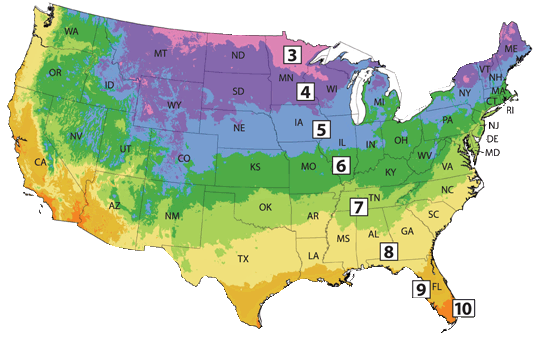
Hardiness Zone

Mature Size
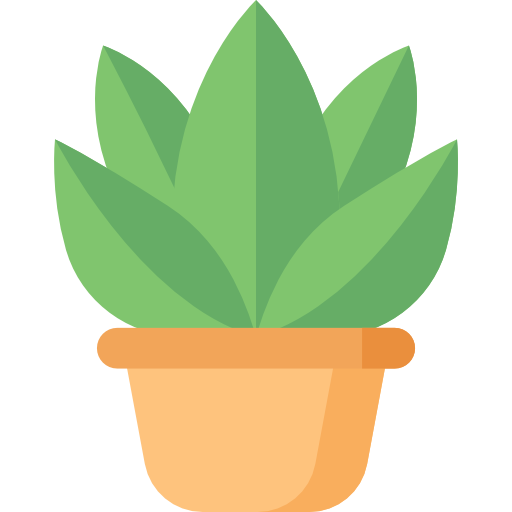
Plant Type

Sun Exposure

Toxicity

Watering Needs
Optimal Light Requirements of Euphorbia Plants
Euphorbia plants are sun-loving and prefer bright direct sunlight. Too much direct sunlight can cause leaf burn, while too little light may result in weak, leggy growth. Providing them with the right balance of light encourages stronger growth, more vibrant foliage, and better blooming.
- When growing indoors, they require a location with bright, indirect light, such as near a south or west-facing window, to ensure proper growth and flowering. They can tolerate some direct sunlight but may suffer if exposed to too much harsh sun, so balancing light exposure is key.
- For outdoor cultivation, prefer full sun to partial shade, depending on the specific species. Most varieties flourish in sunny, well-lit areas with at least 6 to 8 hours of direct sunlight daily, but they can also handle some partial shade in hotter climates, especially during peak midday hours. Ensuring adequate sunlight is crucial for their vibrant growth and blooming.
Euphorbia Watering Requirements: Frequency & Timing
Euphorbia plants, known for their drought tolerance and ability to thrive in harsh conditions, generally prefer minimal watering. Most species can survive in dry environments, storing water in their thick, fleshy stems, making them highly resilient to periods of drought. However, proper watering is crucial to avoid root rot, which is a common issue when these plants are overwatered. The key to watering Euphorbia is to ensure the soil is completely dry before watering again.
- During spring and summer, which are typically the active growing seasons for Euphorbia, the plants require slightly more frequent watering. Water the plant once every two to three weeks, ensuring that the soil dries out thoroughly between waterings. It's best to water deeply in the early morning, allowing the soil to absorb moisture without leaving the roots sitting in water. The frequency can vary depending on the local climate and whether the Euphorbia is grown indoors or outdoors.

- In fall and winter, Euphorbia plants enter a dormant phase, and their water needs significantly decrease. Watering should be reduced to once a month or less, only when the soil becomes completely dry. It’s important to avoid overwatering during this time, as excess moisture can lead to root rot, especially when the plant's growth slows down in cooler temperatures.
Nourish Your Euphorbia: The Best Soil & Fertilizer
Euphorbia plants prefer well-drained soil as it tends to improve drainage and removes excess moisture. You can also plant these species in sandy or slightly alkaline soil. Planet Desert specializes in succulents and has specialized succulent potting soil that includes an organic substrate with mycorrhizae to help with the growth of a healthy root system to help your succulents thrive. As an okay alternative, you can create your own potting mix by combining equal portions of perlite, coarse sand, and good natural potting soil.
Euphorbia succulents benefit from light, balanced fertilization during their active growing season, which typically occurs in spring. A diluted, balanced liquid NPK fertilizer (5-10-5) applied once a year during these months can help promote healthy growth and vibrant foliage. During the fall and winter months, when the plant enters its dormant period, it's best to withhold fertilization entirely to prevent unnecessary nutrient buildup that can stress the plant. Over-fertilizing should always be avoided, as Euphorbia succulents thrive in nutrient-poor conditions and too much fertilizer can lead to weak, leggy growth or even root damage.
Hardiness Zones & Temperature Fluctuations for Euphorbia
Euphorbias prefer warm, dry conditions with minimal humidity. Ensuring low humidity and good air circulation, both indoors and outdoors, will help maintain their health.
- When grown indoors, Euphorbia plants thrive in temperatures ranging from 60°F to 75°F, similar to standard room temperatures. They prefer moderate to low humidity levels, so maintaining an environment with 30% to 50% relative humidity is ideal. These plants are relatively forgiving in terms of humidity, but they do best in drier conditions, as excessive moisture can lead to root rot or fungal issues. Ensure good ventilation and avoid overwatering to help maintain the right balance of moisture.
- For outdoor cultivation, most Euphorbia species are hardy in USDA zones 5-11, with some drought-tolerant varieties capable of surviving in higher zones. They thrive in warm climates and are generally not frost-tolerant, so they need protection in areas that experience cold winters. Humidity is not a critical factor for outdoor Euphorbia plants as long as the soil is well-draining, preventing water from accumulating around the roots.
Our To 10 Favorite Varieties of Euphorbia Plants
Euphorbia plants are known for their unique shapes and textures, making them a popular choice for adding interest to any garden or indoor space. From the spiky stems to the vibrant blooms of, there is a wide variety of species to choose from that can suit any style or preference.

1
Pencil Cactus (Euphorbia tirucalli 'Firesticks')
BUY AT PLANET DESERTkeypoints:
- USDA Hardiness Zones: 9, 10, 11
- Blooming Period: Late Spring, Early summer
- Mature Size: 30 ft. tall, 10 ft. wide
- Flower Color: Yellow, pink, orange
These Fire Stick Succulents have tiny green leaves and red, orange, or pink-colored stems, and can grow up to 30 feet tall when grown outdoors. When grown indoors, they reach up to 6 feet tall. These Euphorbia varieties produce yellow-colored flowers and attract butterflies and insects. Pencil cactus is highly drought-tolerant, making it a low-maintenance plant ideal for xeriscaping and landscaping projects. Its vibrant colors and unique shape add a striking visual element to any indoor or outdoor space. Learn more...

2
Candelabra Tree (Euphorbia ingens)
BUY AT PLANET DESERTkeypoints:
- USDA Hardiness Zones: 10, 11
- Blooming Period: Fall, Winter
- Mature Size: 40 ft. tall (outdoor), 10 ft. tall (indoor)
- Flower Color: Yellow-Green
Euphorbia candelabra, also known as the candelabra tree or Good Luck Cactus, is an extremely drought-tolerant plant that thrives in warm temperatures. Its stunning greenish-yellow blooms from autumn to late winter make it a visually appealing addition to any garden or landscape. Euphorbia candelabra is known for its ability to attract pollinators such as bees and butterflies with its nectar-rich flowers. Additionally, this plant is known for its resilience in harsh conditions, making it a low-maintenance option for gardeners looking to add a touch of exotic beauty to their outdoor space. Learn more...

3
Crown of Thorns (Euphorbia milii Yellow)
BUY AT PLANET DESERTkeypoints:
- USDA Hardiness Zones: 9, 10, 11
- Blooming Period: Spring, Summer
- Mature Size: 3 ft. tall
- Flower Color: Gold, Yellow
The Crown of Thorns is a striking succulent plant that will surely capture any onlooker's attention. With its vibrant yellow flowers and sharp thorns adorning its stems, this plant adds a touch of drama and beauty to any garden or indoor space. Its unique appearance and resilience make it a popular choice for those looking to add a bold statement piece to their collection of plants. In addition to its visual appeal, Crown of Thorns is also known for its easy care requirements, making it an ideal choice for both experienced and novice gardeners. This plant thrives in bright light and requires minimal watering, making it a low-maintenance option for those with busy schedules. With its stunning appearance and easy care instructions, Crown of Thorns is sure to be a standout addition to any plant collection. Learn more...

4
African Milk Tree (Euphorbia trigona 'Rubra')
BUY AT PLANET DESERTkeypoints:
- USDA Hardiness Zones: 9, 10, 11
- Blooming Period: Spring, Summer
- Mature Size: 9 ft. tall, 2 ft. wide
- Flower Color: Red, White
The African Milk Tree 'Rubra' is a striking, architectural succulent that instantly grabs attention with its vibrant burgundy-red stems and upright growth habit. Standing tall like a candelabra, this plant can grow up to 9 feet in height, making it a living sculpture in your indoor or outdoor garden. Its triangular stems are edged with spines, and small green leaves grow from the tips, creating a unique contrast against the rich red hue. This plant thrives on neglect, requiring little water, and its bold, upright appearance makes it a perfect centerpiece for a modern home or a dry garden landscape. Learn more...

5
Baseball Plant (Euphorbia obesa)
BUY AT PLANET DESERTkeypoints:
- USDA Hardiness Zones: 10, 11
- Blooming Period: Mid Summer
- Mature Size: 8 in. tall, 4 in. wide
- Flower Color: Yellow
The Baseball Plant is round, compact, and delightfully quirky. This plump succulent, with its perfectly symmetrical shape and green striped pattern, looks almost otherworldly. Growing to the size of a softball, it is slow-growing and requires minimal care, making it an excellent choice for both beginner gardeners and succulent collectors. Its charming spherical form and unique texture make it a fun addition to any windowsill or desk, where it can quietly soak up the sun and offer a playful conversation piece. This little gem is bound to steal hearts with its curious, minimalist appeal. Learn more....

6
Devils Backbone Plant (Euphorbia tithymaloides)
BUY AT PLANET DESERTkeypoints:
- USDA Hardiness Zones: 10, 11
- Blooming Period: Mid spring
- Mature Size: 8 ft. tall
- Flower Color: Red, burgandy, pink
With its zigzag stems and vibrant green leaves, the Devil’s Backbone plant is as intriguing as its name suggests. Each stem grows in a jagged, almost lightning bolt-like pattern, creating a whimsical and unexpected visual. This tropical succulent can grow up to 8 feet outdoors, or remain a compact indoor plant, adapting beautifully to its environment. The Devil's Backbone also surprises with small red flowers that emerge from the leaf axils, adding a splash of color. Its unusual, eccentric growth habit is perfect for anyone seeking to add an element of surprise and fun to their plant collection. Learn more...

7
Poinsettia (Euphorbia Pulcherrima)
keypoints:
- USDA Hardiness Zones: 9, 10, 11
- Blooming Period: Winter, spring
- Mature Size: 15 ft. tall, 8 ft. wide
- Flower Color: Red, pink, or cream-colored leafy bracts
The poinsettia is one of the most popular euphorbia species that are not succulents. Poinsettias are a popular Christmas plant known for their vibrant bracts in various colors. They prefer bright, indirect light and well-draining soil, and are grown away from drafts and extreme temperature fluctuations. Available in potted colors like red, pink, and white, poinsettias also feature yellow, salmon, and greenish bracts around the flower. They are commonly found at florists and garden retailers.

8
Indian Corn Cob Cactus (Euphorbia mammillaris Variegata)
BUY AT PLANET DESERTkeypoints:
- USDA Hardiness Zones: 9, 10, 11
- Blooming Period: Late winter, early Summer
- Mature Size: 14 in. tall
- Flower Color: Chalky Green
The Indian Corn Cob Cactus is a playful and colorful succulent that truly lives up to its name. Its variegated stems, adorned with white and green stripes, grow in clustered, cob-like formations, resembling tiny corncobs covered in spiky growths. With a texture that’s as interesting as its appearance, this Euphorbia is perfect for succulent lovers who enjoy quirky plants with a lot of personality. It remains compact, making it ideal for small spaces, while its variegation and unique structure make it a standout in any succulent arrangement. Easy to care for and drought-tolerant, this plant is a cheerful addition to any garden or windowsill. Learn more...

9
Medusa Head Plant (Euphorbia flanaganii)
BUY AT PLANET DESERTkeypoints:
- USDA Hardiness Zones: 9, 10, 11
- Blooming Period: Summer, Autumn
- Mature Size: 12 in. tall, 16 in. wide
- Flower Color: Yellow, Golden
The Medusa Head Plant is a fascinating and exotic succulent, named for its wild, snaking growth pattern that resembles the mythical creature Medusa’s hair. At its center, a crown of short, thick stems radiates outward in all directions, giving the plant a dramatic, yet alluring look. The bright green, fleshy stems can trail and cascade over the sides of pots, making this plant an eye-catching piece in any hanging basket or succulent arrangement. Its unusual, tentacle-like appearance makes it a perfect choice for those who appreciate out-of-the-ordinary plants with bold, unique forms. Plus, it's low-maintenance, requiring minimal water and care, making it as easy to love as it is to look at. Learn more....

10
Coral Cactus - Euphorbia lactea crested
BUY AT PLANET DESERTkeypoints:
- USDA Hardiness Zones: 10, 11
- Blooming Period: Spring, Summer
- Mature Size: 15 ft. tall
- Flower Color: Pale pink, red, yellow
The Coral Cactus is a botanical masterpiece, fusing the appearance of coral reefs with the rugged beauty of a cactus. This plant features a crested, fan-like top that sits atop a thick, spiny stem, creating an extraordinary visual contrast. The ridged, ruffled crests often display shades of green, purple, or pink, making it one of the most stunning Euphorbias you can find. Despite its dramatic appearance, the Coral Cactus is quite easy to care for and thrives in bright light with minimal watering. This striking fusion of colors and textures makes it a centerpiece in any garden or indoor collection, offering an artistic and exotic touch that will leave plant lovers mesmerized. Learn more...
The Art of Potting and Repotting Euphorbia Succulents
Euphorbia succulents are known for their unique shapes and sizes, making them a popular choice among plant enthusiasts. Proper potting and repotting techniques are essential for maintaining the health and growth of these plants.
To Pot Your Succulents:
- When it comes to potting Euphorbia, choosing the right container and potting mix is crucial for healthy growth.
- Select a well-draining potting mix specifically designed for cacti and succulents, as Euphorbia is prone to root rot in waterlogged soil.
- A container with good drainage holes will also prevent water from accumulating.
- Consider a pot that is slightly larger than the plant's current root system, as Euphorbia prefers a snug fit.
- Terracotta or ceramic pots are ideal, as they allow for better air circulation and moisture evaporation.
To Repot Your Succulents:
- Repotting Euphorbia is necessary every 2-3 years, typically during spring when the plant is actively growing.
- Choose a pot that is only 1-2 sizes larger than the previous one, as Euphorbia prefers a slightly root-bound environment.
- Gently remove the plant from its pot, taking care not to damage the roots.
- Trim any dead or damaged roots before placing the plant in its new pot.
- Water sparingly after repotting, as the plant will need time to adjust.
By repotting your Euphorbia correctly, you'll promote healthy growth, encourage new roots, and ensure your plant thrives.
How to Propagate Euphorbia: A Step-by-Step Guide
Euphorbias can indeed be grown from seed, but the process is quite challenging, as the seeds are often difficult to germinate or even source. For this reason, stem cuttings are the preferred method for propagating most Euphorbia species. The ideal time for propagation is in the spring when new growth begins, though it can also be done during the summer months. Propagating through cuttings is not only easier but also much faster and more reliable than seed germination.
- To propagate by cuttings, use a sharp, sterilized knife to take a healthy tip cutting that’s at least three inches long. Be cautious, as Euphorbias produce a milky sap that can irritate the skin, so it's important to wear gloves while handling them.
- After cutting, allow the fresh stem to dry and form a callous for at least 24 hours, though waiting a couple of days will improve your success rate by preventing rot.
- Once the cutting has calloused, prepare a small, four-inch pot filled with well-draining cactus mix or seed-starting mix. Water the soil until it’s evenly moist, but not soggy.
- Before planting, dip the cut end of the Euphorbia in rooting hormone to encourage faster root development. Insert the cutting about 1/3 of an inch deep into the soil.

- Keep the soil lightly moist as the cutting takes root, but avoid overwatering, as this can cause rot.
- Within a few weeks, you should feel resistance when gently tugging on the cutting, which means roots have developed.
- At this point, your new Euphorbia is ready to be transplanted into a larger container or directly into a garden bed, where it will continue to grow and thrive.
Common Pest and Problems with Euphorbia Plants
Most Euphorbia plants don't usually have any issues. Few insects are attracted to euphorbias because of their milky sap and spiky needles. The most common problems with Euphorbia are:

- Aphids: These small insects can suck the sap from the plant, leading to stunted growth and yellowing of leaves. They can also transmit diseases between plants.
- Mealybugs:These pests appear as white, cottony masses on the leaves and stems. They can weaken the plant by feeding on its sap and may cause leaf drop.
- Spider Mites: These tiny arachnids thrive in dry conditions and can cause yellowing and stippling on leaves. You may notice webbing on the plant as well.
- Scale Insects:These pests attach themselves to the stems and leaves, appearing as small, brown or white bumps. They can cause leaf yellowing and overall decline in plant health. Regularly inspect your plants for signs of infestation and remove any affected areas promptly to prevent further spread.
- Fungal Diseases:Euphorbia plants can be susceptible to fungal infections like powdery mildew, which appears as a white, powdery substance on leaves, and root rot, often caused by overwatering.
- Overwatering:Euphorbia plants are drought-tolerant and can suffer from root rot if watered too frequently. Yellowing leaves and wilting can indicate overwatering issues.
- Environmental Stress:Euphorbias can react poorly to sudden changes in temperature, humidity, or light conditions, leading to leaf drop or poor growth.
These pests and problems can often be managed with proper care and attention to the plant's growing conditions.
Where You Can Buy Euphorbia Plants?
When it comes to buying Euphorbia (spurges), unless you have a local nursery that specializes in succulents; then you may have a hard time finding Euphorbia succulents near you.
Most of the Euphorbia Plants listed above are available at Planet Desert. You can just click the buy link on any of the plant on our list above, or feel free to explore more types of Euphorbia plants here.
We have the world's largest selection of Cactus & Succulents that can be shipped anywhere in the United States and are guaranteed to arrive happy & healthy.
Key Take aways
- These plants are incredibly drought-tolerant, making them perfect for arid environments and water-wise gardens.
- Euphorbias are highly diverse, ranging from small, compact succulents to large, tree-like species, with over 2,000 varieties worldwide.
- Unlike true cacti, Euphorbias have unique floral structures called cyathia, which are small, cup-shaped clusters of flowers.
- Many Euphorbia species have evolved to mimic cacti, despite being unrelated, as part of their convergent evolution in desert habitats.
- Euphorbias produce a milky white sap called latex, which is toxic and can cause skin irritation or eye damage if not handled carefully.
- Some Euphorbias, like the African Milk Tree, are considered symbols of good luck and are often grown for their protective qualities in many cultures.
The Bottom Line
Overall, the Euphorbia is a diverse genus of flowering plants. There are about 2000 varieties in the Euphorbiaceae family distributed throughout the world. From succulents to shrubs and trees, Euphorbias thrive in a wide range of climates and conditions, offering both aesthetic appeal and resilience. They are cherished for their distinctive structures and ability to endure drought, making them ideal for low-maintenance gardens and landscapes. Despite their diversity, Euphorbias share a unique character that makes them stand out among other plant families, offering beauty and practicality for gardeners and plant enthusiasts alike.
Euphorbia Plants Quick Reference Growers Guide
| Bloom Season | Spring, Summer |
|---|---|
| Botanical Name | Euphorbia spp. |
| Common Name | Spurges |
| Dormancy | Winter |
| Family | Euphorbiaceae |
| Flower Color | Yellow, red, pink, white |
| Genus | Euphorbia |
| Growth Habit | Herbaceous, shrubby |
| Growth Rate | Slow to Moderate |
| Hardiness Zone | 5, 6, 7, 8, 9, 10, 11 |
| Mature Size | 36 in. tall, 36 in. wide |
| Native Area | Africa, Asia, North America, South America |
| Plant Type | Herbaceous, Perennial, Succulent |
| Propagation | By stem cuttings, seeds |
| Resistance | Drought tolerant, heat tolerant, pest resistant |
| Soil PH | 6.5, Acidic, Neutral |
| Soil Type | Succulent potting mix soil |
| Special Features | Easy to grow |
| Sun Exposure | Full sun, partial shade |
| Toxicity | Mildly toxic to humans, mildly toxic to pets (Keep away from children) |
| Watering Needs | Low |
Frequently Asked Questions
-
Does Euphorbia need full sun or shade?
Euphorbia plants generally thrive in full sun. Most species prefer bright, direct sunlight for several hours a day, which helps them grow strong and healthy. However, some varieties can tolerate partial shade, especially in extremely hot climates where they might benefit from some protection during the hottest part of the day. If you’re planting euphorbia, aim for a location that receives at least 6 hours of sunlight daily for optimal growth. Just make sure to also provide well-draining soil, as they don’t like to sit in water.
-
Is Euphorbia an annual or perennial?
Euphorbia can be either annual or perennial, depending on the specific species. Some euphorbia varieties, like Euphorbia hypericifolia, are grown as annuals in many regions because they do not survive the winter frost. On the other hand, many other species, such as Euphorbia amygdaloides or Euphorbia myrsinites, are perennial and can survive for several years, returning each spring.
-
What is the lifespan of an Euphorbia plant?
The lifespan of an euphorbia plant can vary significantly depending on the species. Perennial euphorbias can live anywhere from 3 to 10 years or more, with some species even lasting several decades under ideal conditions. Annual euphorbias, however, typically complete their life cycle in one growing season, meaning they last only for that year before dying off.
-
How do you care for Euphorbia Plant?
- Euphorbia plants thrive in bright, direct sunlight for at least 6 hours a day. This helps them grow strong and healthy.
- It's essential to plant euphorbia in well-draining soil to prevent root rot. A sandy or rocky soil mix is ideal for their growth.
- Euphorbias are drought-tolerant and do not need a lot of water. Allow the soil to dry out between waterings, especially during the dormant winter months.
- You can apply a balanced, slow-release fertilizer during the growing season to promote healthy growth, but be careful not to over-fertilize.
- Remove any dead or damaged stems to encourage new growth and maintain the plant's shape. Pruning can also help improve air circulation around the plant.
- While many euphorbia species are hardy, some may need protection from frost. If you live in a colder climate, consider bringing potted euphorbias indoors during winter.
- Keep an eye out for common pests such as aphids or mealybugs. If you notice any infestations, treat them promptly with insecticidal soap or neem oil.
-
Does Euphorbia need a lot of water?
Euphorbia plants are generally drought-tolerant and do not require a lot of water. They have adapted to survive in dry conditions, making them suitable for xeriscaping and low-water gardens. It's important to allow the soil to dry out between waterings, as euphorbias are susceptible to root rot if they sit in waterlogged soil. During the growing season, watering should be moderate, and you can reduce watering significantly in the fall and winter months when the plant is dormant. Overall, they thrive best in well-draining soil and with infrequent watering, making them a great choice for low-maintenance gardens.

















